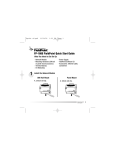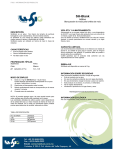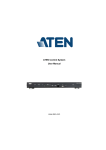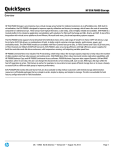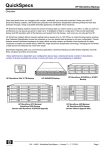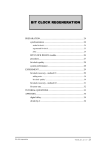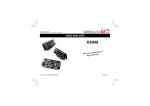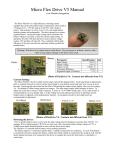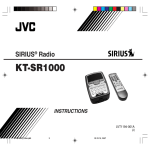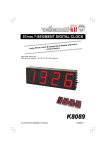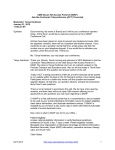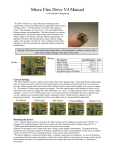Download General guidelines for assembly, safety and
Transcript
General guidelines for assembly, safety and electromagnetic compatibility For more info about all our kits, please visit our Web-site : http://www.velleman.be K6000 1 RS While the soldering iron is heating, read this first ! You want to enjoy your Velleman Kit as quick as possible, these hints will assist you ! First, take your time. Hasty jobs often result in disappointments. Make sure your workspace is wide, clean and well lit. Collect all the necessary tools you might need for the assembly. Take care, while unpacking that nothing is left in the wrapping or boxes, such as small parts, manuals and leaflets. Please check if all components are present. Use the supplied partlist as a guide. In case there is something missing or damaged, return the Kit to your dealer. Read all supplied manuals and notes carefully before you start constructing... The Velleman Kit Warranty Please read this carefully. In most cases, you can easily solve problems yourself. This text tells you all about. The Kit, you have built or intend to build, was design by a team of highly skilled design engineers. Before their design reaches the customer, it has been tested and re-tested over and over again. This procedure guarantees you that every design actually works, when it is put together in the right way. But what if something does go wrong ? Avoid unnecessary expenses and loss of time ! Examine the whole circuit closely. An even better procedure is to let someone else do this for you. Every tiny detail is important. Are all components put in the right place and correctly oriented. Watch out for bad or forgotten solder joints and short-circuits ! What about the power supply ? Is it correct and present ? Does the Kit require special calibration or adjustment ? Do the possible external devices such as computers, audio sources or power circuits match the Kit specifications ? When all the above did not bring you any closer to a solution, start thinking of a defective part or parts. Semiconductors like transistors, FET’s, IC’s and processors, although very reliable do not support abuse. You can send us suspect semiconductors for inspection and eventual exchange but keep in mind. Our experienced technicians can tell the difference between a defective and a fried transistor, and in several cases a stamp is much more expensive than a replacement semiconductor bought at the local store. Any Velleman-Kit if defective will be repaired or replaced at our option within 30 days of purchase. Simply return it to the place of purchase with proof of purchase. K6000 2 RS ASSEMBLY STEPS Required tools to assemble the kit : Use a small soldering iron of max. 40W. Use thin (1mm) solder, do not use any flux. Use a small cutter to trim excess wires. n n n n • ‚ Mount the components against the PCB surface and carefully solder the leads in place. Obtain cone-shaped shiny soldered joints by heating up the component leads sufficiently. ƒ „ This solder joint results in a bad connection. Trim the excess wires up to the level of the solder. Careless assembly will certainly lead to problems Insert the part, oriented correctly, into its correct holes in the PCB. Mount the components in the correct order as stated in the manual. Use the boxes m to check off your progress. F Before starting to build, read also the general guidelines. K6000 3 RS 1. 10. 11. RV... 2. RV... RV... 12. 3. 13. 4. L... L... 14. 5. 6. CV.. CV... 15. 7. 16. 8. 17. CATHODE 9. + 18. - K6000 4 RS F... 19. F... V~ I= A Kit n°: K Hz W F= A 20. 21. SW... SW... 22. 23. 24. 25. K6000 5 RS General guidelines for assembly, safety and electromagnetic compatibility Soldering: 1. Mount the components against the PCB surface and carefully solder the leads in place. 2. Obtain cone-shaped, shiny soldered joints by heating up the component leads sufficiently. 3. This solder joint gives a bad connection. 4. Snip off the excess lead up to the level of the solder. Components: 1. Resistor 2. Potentiometer 3. Trimmer potentiometer 4. Coil 5. Capacitor 6. Trimmer capacitor 7. Electrolytic capacitor 8. Diode 9. Rectifier bridge 10. Zener diode 11. LED (light emitting diode) 12. IC socket 13. IC (integrated circuit) 14. Transistor 15. Voltage regulator 16. Triac 17. Diac 18. PCB pin 19. Fuse holder 20. Pushbutton 21. Switch K6000 22. 23. 24. 25. Relay Crystal Transformator Screw connector General guidelines for power supply and any shielding : • Preferably use an approved AC adapter or batteries. If this is not possible because the kit has to be connected directly to the AC-outlet, then carefully follow the guidelines below: • Mount the kit in a suitable plastic housing. • If a metal housing is needed for screening purposes, then the housing must be grounded. • Use a mains switch if the device consumes more than 10W (Power consumption = Mains voltage x Current). • If applicable, use a isolated transformer. • Use a double pole AC-outlet switch for kits that are connected to the AC-outlet without a transformer. • Use a robust AC-outlet lead with clamp, or use a AC-outlet input connector. • Use well insulated cable for AC-outlet voltage cabling with a minimum area of cross-section of 0.75mm² . • Attach the sticker supplied (26) to the housing, and fill in the AC-outlet voltage, frequency, power consumption or current, and the value of the fuse. 6 RS MICRO PROCESSOR CONTROLLER/TIMER In addition to the features of an ordinary week/day switching clock, this jewel of a controller allows controlling independant temperatures through one or all four of its outputs. For every temperature to be measured (up to 4) a separate sensor K6001 or K6003 is required, which allows to install the controller itself distant from the measuring point. When a sensor becomes defective, the controller outputs a message on the screen and switches the corresponding output off. Any relevant information like output number, temperature or on/off, day and time is displayed through an illuminated LC display. Programming the device (up to 200 steps!) is done through a clear "menu" structure. Just like with an ordinary thermostat you can readjust the preprogrammed settings temporarily and set a hysteresis per output. In order to save programming work in the case of a mains voltage drop, the print has been designed such that it can be fitted with a NiCd or ordinary 9V battery. TECHNICAL DATA - 4 noisefree relay outputs max. 5A - 4 opto coupler inputs for temperature sensors K6001 or K6003 - Allows to supply up to four sensors type K6001 - Detection of the presence and operation of temperature sensors - 16 character LCD screen (illuminated) - 50 program steps per output (200 in total) - Allows either week or day program - Programming resolution: 1 minute and 0.1° - Hysteresis adjustable from 0 to 25° (0,1° per step) separately per output. - Accuracy: +/-0.1° - Measuring range: -40° to +150° - Sampling frequency: 1 sec. - 24 hour clock with day indication - LED indication of the output states - Standard version intended for building in - Separately obtainable housing B6000 for building up - Supply voltage: mains - Memory back up: 24 hours with 9V battery / 8 hours with 4.8V NiCd battery - Dimensions (front panel): 235X120mm. Building-in depth min. 50mm Modifications reserved K6000 7 RS ASSEMBLY A) Assembly of the keyboard module P6000S q-Fit D5 through D9, 1N4148 type small signal diodes or equivalent. Pay attention to the polarity! q-Fit the push buttons SW1 through SW5, with their bodies AGAINST the pcb. REMARK: Don't warm up the terminals of the push buttons too long, because this might damage the push buttons irreparably! B) Assembly of the basic module P6000B q-Fit the wire jumpers marked J on the pcb q-The wire jumper between IC3 and IC5 (dotted-lined and marked "WRITE PROTECT") must be fitted in the first instance. If afterwards you want to prevent the established program from getting overwritten, then you'll have to cut this wire jumper. Wire jumper JC should not be fitted for the present. Fit the following components when using a 9V battery for memory backup: q- D10, diode from the 1N4148 series or equivalent. Pay attention to the polarity! q- ZD2, 3.3V zener diode. Pay attention to the polarity! q- T6, BC557C type transistor or equivalent. Fit the following components when using a NiCd battery for memory backup: q- Wire jumper JC q- D27, diode from the 1N4148 series or equivalent. Pay attention to the polarity! q- D26, diode from the 1N4000 series or equivalent. Pay attention to the polarity! Fit the following resistors: q- R1 through R6, 1K (brown, black, red) q- R7, 4K7 (yellow, violet, red) q- R8 through R12, 47K (yellow, violet, orange) q- R22 through R31, 4K7 (yellow, violet, red) q- R32, 10M (brown, black, blue) q- R33, 1K (brown, black, red) q- R34, 680 ohm (blue, grey, brown) q- R35, 1/2W 220 ohm (red, red, brown, white) Fit the following diodes: (pay attention to the polarity) q- D1 through D4, diode from the 1N4148 series or equivalent. q- D11 through D15, diode from the 1N4148 series or equivalent q- D16 through D25, diode from the 1N4000 series. q- ZD1, 7.5V zener diode. q-Fit the IC sockets for IC1 through IC9 q-Fit push button SW6 (see also REMARK above in point A) K6000 8 RS q-Fit the 4K7 resistor network RA1. Such a network consists of nine resistors connected together at one end and accomodated in one single housing. The common is marked with a notch, a dot or a stripe, and must correspond with the hole marked "C". q-Fit 2 pcb pins for GND and TP q-T1 through T5, BC547 type or equivalent. Transistors q-Fit the 4.1943MHz crystal X1. Crystal q-Fit the 7806 type voltage regulator VR1, with its metal back towards D26. Fit the following capacitors: q-C1, 5pF ceramic (sometimes marked 4.7) q-C2, 39pF ceramic q-C3 through C5, 100nF (sometimes marked u1 or 104) q-C6, 10uF electrolytic capacitor. Pay attention to the polarity! q-C7, 2200uF electrolytic capacitor. Pay attention to the polarity! q-C8 and C9, 470uF. Pay attention to the polarity! q-Fit the fuse holder F1 and fit it with a 0.4A fuse. q-Fit the 4 six-pole connectors J1 through J4. q-Fit the relays RY1 through RY4. Assembly of the noise suppressing networks for the outputs: q-Fit the capacitors C10 through C13, 100nF 400V or higher. Fit these capacitors vertically and with only one lead connected for the present. q-Fit the following 220 ohm 1/2W resistors also vertically and with only one lead connected for the present: When using the "normally closed (NC)" contact of the relay, fit resistor R37, R39, R41, R43 for output 1, 2, 3, 4 respectively. When however using the "normally open (NO)" contact, fit resistor R36, R38, R40, R42 for output 1, 2, 3, 4 respectively. Then connect the free extremities of each capacitor-resistor pair together and cut them. K6000 9 RS q-Apply an extra layer of solder to the soldered copper traces. q-Connect the 9V battery holder (when not using a NiCd battery) to the - points (black wire) and to one of the two + holes (red wire) of E1. q-Fit the 12V/100mA transformer TRANSFO 2. q-Fit the 2X6V (12V) / 300mA transformer TRANSFO 1. Check the position of the 12V output. Fit the following components on the solder side. Do this very carefully because afterwards some of these components will have to fit under or to pass through the front panel. Be also careful when soldering because for some of the components you have to heat close by the component body: q- RV1, 4K7 (5K) trimming potentiometer. q- CV1, 30pF trimming capacitor. q- the LED's LD1 through LD5 (LD5= red) with their tops at a height of 14mm above the pcb surface. To do so first solder one lead of the LED, then correct its position and finally solder its second lead. Pay attention to the polarity, the shortest lead should correspond with the flat side of the circle on the pcb overprint. At this point, before proceeding, check the whole mounting once more thoroughly as well as the solder side for soldering mistakes! Fitting the keyboard module onto the basic module ca. 7mm P6000S P6000S 10mm SPACER P6000S P6000S SOLDERSIDE SOLDERSIDE P6000B P6000B Solder six uninsulated wires to the points KB, S1 through S5 at the solder side of the keyboard pcb. These wires will serve afterwards to make the connections with the basic module. REMARK: Cut the superfluous extremities of these wires FLUSH with the pcb surface at the component side! K6000 10 RS SOLDER Fit the keyboard pcb into the four holes at the solder side of the basic pcb. See that the connection wires (KB, S1..S5) pass through the basic pcb too and that the connection point KB corresponds with the hole marked "1" at the solder side of the basic pcb. Fix the keyboard pcb using four M2.5 nuts. See that the pcb is perfectly parallel with the basic pcb, because only then you can solder and cut the connections at the component side of the basic pcb. Fitting the display onto the basic module LCD MODULE M2.5 BOLT INSULATING SLEEVE 5mm SPACER SOLDERSIDE M2.5 NUT P6000B Check that, where the display has to be fitted, the solder points on the basic pcb are cut short. BE SHURE TO CUT the solder points from SW6!. Fit the dislay at the solder side of the basic pcb using four M2.5 bolts together with four 5mm spacers and an additional insulation ring. Fix the display using four M2.5 nuts at the component side of the basic pcb and check that the display is at right angles to the basic pcb. Now connect by means of uninsulated wires, the display with the base PCB (see fig.). LCD TYPE A LCD TYPE B . Insert the following IC's: q-IC1, VK6000 or PIC16C57 type, with its notch towards the transformer. q-IC2, HCT4060 type or equivalent, with its notch towards IC3. K6000 11 RS q-IC3, 74HC373 type or equivalent, with its notch towards the pcb edge. q-IC4, 74HC373 type or equivalent, with its notch towards SW6. q-IC5, 6116 type or equivalent, with its notch towards IC3. q-Fit IC6 through IC9, TIL111 or 4N27 type opto couplers or equivalent, with their notches towards C8. Before fitting the front panel and the battery we will first test the circuit. TEST AND CONNECTION a) Test without temperature sensors: Connect the mains voltage to the points MAINS. ATTENTION: CERTAIN POINTS OF THE PCB NOW CARRY DANGEROUS MAINS VOLTAGE. Normally, the display should show the text "1;OFF Mo 00:00" now. Should this not be the case, just turn the contrast trimming potentiometer. Using the push buttons SW2 and SW3 (second and third from the left) you now should be able to "select" among the four outputs. (the output number is the first digit on the display) ATTENTION: Should the controller not work, then try to unblock by just pressing the RESET push button next to IC4. This RESET button may be used every time the controller 'locks up'. Attention, pressing the RESET button erases the memory content. b) Test with temperature sensors: (K6001 or K6003) Before doing the following test, first disconnect the mains voltage. Connect one or more sensors to the points SENSOR1 through SENSOR4, and branch off the power supply for the K6001 type sensors from the points Vsensor + and -. (see fig. 6.0) The power supply for the K6003 type sensors has to be made separately, or replace TRANSFO 2 by a 2X6V/1A type (see fig. 6.1). Now switch the power back on. Normally, for these outputs equipped with a sensor, the display should indicate a temperature now, instead of "OFF" (selection of the outputs is again done using the buttons SW2 and SW3). The display indicating "SENSOR ERROR" or simply keeping indicating "OFF" for a certain output means that this sensor is defective or wrongly connected. See USER MANUAL if you want to test all the functions before fixing the front panel. After a successful test, you may fit a 9V battery. Fix the battery with a binder or with a piece of two-sided adhesive tape. When using a NiCd battery you may fit two 2.4V batteries or one 4.8V battery in the place marked E1. REMARK: With a NiCd battery, the memory back-up will not work until the controller will have been powered on for a few weeks. (this is the time needed to charge the NiCd battery). K6000 12 RS K6000/K6010 MAINS Vsensor + SENSOR4 SENSOR3 SENSOR2 SENSOR1 + + + + MAINS SENSOR OUT - + K6001 SENSOR OUT - + K6001 SENSOR OUT - + K6001 SENSOR OUT - K6001 K6000 + FIG. 6.0 13 RS K6000/K6010 TRANSFO2 6 0 6V/1A 6 MAINS Vsensor + SENSOR4 SENSOR3 SENSOR2 SENSOR1 + + + + MAINS 6V/1A SENSOR OUT - + K6003 SENSOR OUT - + K6003 SENSOR OUT - + K6003 SENSOR OUT - K6003 K6000 + FIG. 6.1 14 RS ADJUSTMENT ATTENTION: WHEN THE CIRCUIT IS POWERED ON, A LOT OF POINTS CARRY DANGEROUS MAINS VOLTAGE. As the clock of the controller must continue working during a power failure, we opted for an oscillator based clock built round a crystal and a devider. If you don't adjust the clock, it may go wrong after a certain period of time. Adjusting can be done in two different ways: 1) Using a frequency counter: Connect the counter to the points GND(earth) and TP. The frequency measured must be of 256KHz i.e. a period of 3.90625mS. The time base can be adjusted using trimming capacitor CV1. 2) at sight: Of course the first method is the best one but as only few of us possess a frequency counter, the second method will be the most frequently used one. Turn the trimming capacitor CV1 to its centre position (the fixed and movable plates must overlap by about half their surfaces). Should in course of time the clock go wrong, then you would have to readjust the trimming capacitor CV1 a little. To that end the front panel contains a hole through which the clock can be adjusted. FIXING THE FRONT PANEL M3 BOLT P6000B 8mm THREAD TUBE SOLDERSIDE 5mm THREAD TUBE M3 BEVELLED HEAD BOLT ALU FRONT PANEL Fit each of the six sunk holes with an 8mm and 10mm spacer using an M3 bevelled head bolt. ATTENTION: Fix these screws WELL because, with the foil sticked, they will no longer be accessible. Before sticking the self-adhesive foil to the aluminium front pate, check that the surface contains no wire-edges, dirt or other obstacles. Position the foil onto the front panel (pay attention to the LED windows OUT1, ...). Provisionally adhere one half of the foil using adhesive tape. Remove the protective sheet from the other half and stick this side, then remove the adhesive tape and the protective sheet from the first half and stick this half to the aluminium front plate too. Fit the basic module onto the thread tubes using six M3 bolts and check that the indication LED's and LCD display are well positioned, also check the operation of the push buttons. The controller is now ready for use. K6000 15 RS D5 D6 D7 D8 SW5 D9 NC 4 NO NC 3 NO NC 2 NO NC 1 NO SLOW 0.4A F1 J2 J1 C12 C11 R43 RY4 RY3 RY2 RY1 12VAC TRANSFO2 R42 C13 R40 R41 R38 R39 R37 R36 LD1 T2 LD2 T3 LD5 J LD4 MAINS J 6 J3 + - + - 1 D15 6 1 IC9 TRANSFO1 0 12VAC + D14 IC8 - C7 J4 1 + - D13 IC7 D17 D19 D18 D16 VR1 C3 9 VOLT BATTERY ZD2 D26 + 1 J J J J IC6 C9 D12 C4 Vsensor SENSOR4 SENSOR3 SENSOR2 SENSOR1 - C8 E1 1X4.8V OR 2X2.4V Ni-Cd BATTERY VELLEMAN P6000B'4 LD3 T4 T6 JC D10 D27 R12 T1 J R31 IC2 256Hz TP J J D11 SW6 RESET J RA1 J R32 CV1 C5 CLOCK C1 ADJUST C X1 1 J 1 J J IC4 C2 C6 J 1 WRITE PROTECT J J IC3 R5 GND J D20 D1 R1 D22 R22 R23 R24 R25 D2 R2 D3 R3 D4 R4 R33 J J J IC1 J LDKEYBOARD PCB ZD1 R6 R30 RV1 DISPLAY CONTRAST T5 J LCD MODULE DY1 IC5 R7 C10 D25 16 SW4 D24 SW3 D23 R9 D21 R8 LD+LD LD+ D7 D6 D5 D4 D3 D2 D1 D0 E RW RS Vo Vdd GND S5 S4 S3 S2 S1 KB SW2 R11 KB 1 2 3 4 5 R34 MAN R10 R35 K6000 +LD SW1 R26 R27 R28 R29 1 1 VELLEMAN P6000S'2 ENTER RUN RS K6000 17 RS


















